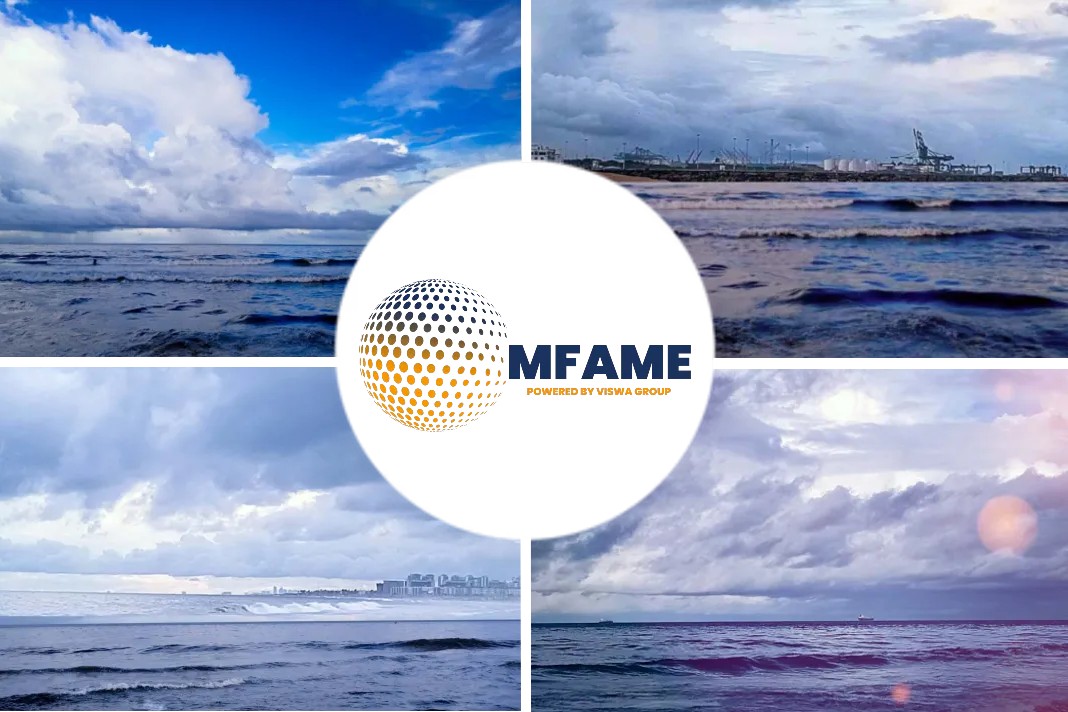Scorpio Tanker scrubber purchase reflects growing trend ahead of IMO 2020 says, Marieke Alsguth for Platts.
Purchase Agreement
Scorpio Tankers has agreed to purchase 52 scrubber systems, with an option to buy 28 more. This reflects a growing trend as the shipping industry prepares for the upcoming bunker fuel regulations in 2020.
The company said Monday it would buy 52 hybrid ready exhaust gas cleaning systems for an estimated total of $79.6 million, to be installed in its fleet of 109 owned or financed leased product tankers.
Of the 52 scrubbers, 42 units will be purchased in 2019 and 10 in 2020. Scorpio has the option to purchase an additional 28 scrubbers in 2020, which would bring the total number to 80.
A Scorpio representative could not comment on where it purchased the scrubbers.
Scrubbers opted with upgrade option
The 52 scrubbers are open loop systems, which use seawater to remove sulfur oxides from the engine exhaust. The sulfur oxide in the exhaust reacts with the water to form sulfuric acid, which is then washed back into the sea after neutralization.
However, the scrubbers can be upgraded to closed-loop systems, where exhaust gases are sprayed with seawater mixed with caustic soda for neutralization and the effluents can be stored in a holding tank for later discharge.
Scorpio Tankers’ fleet includes 38 Long Range 2 tankers, 12 LR1s, 45 Medium Range tankers, and 14 Handymax tankers, with an average age of 3.3 years. The company time or bareboat charters 13 product tankers, including one LR2, five MRs and seven Handymaxes.
Shipowners warned
Speakers at the 12th annual MARE Forum in Houston last week warned that time was running out for shipowners to fully prepare for the IMO 2020 implementation, in terms of both equipment availability from top-tier scrubber manufacturers and shipyard capacity for installations.
Industry adoption of scrubbers has risen and is expected to climb further as the deadline nears.
Adoption of scrubbers
Derek Novak, Senior Vice President of Engineering and Technology and the American Bureau of Shipping, said at the MARE forum that the total adoption of scrubbers as of October 2018 amounted to 1,509 units, with 665 to be installed on newbuild vessels and 844 to be retrofitted.
He expects a total of 2,000 to 3,000 vessels will be outfitted with scrubbers to comply with the new regulations. Assuming the total merchant marine fleet amounts to nearly 60,000 vessels, those 2,000-3,000 scrubbers make up only 3%-5% of the entire fleet.
According to S&P Global Platts Analytics, the number of scrubbers installed and ordered at the end of November amounted to 1,948 units, with the total number installed and ordered by January 2020 forecast at 2,278 units.
Availability questions
Concerns around the availability of 3.5% sulfur bunker fuel, which scrubber-installed tankers would continue to use after January 1, 2020. With most bunkering locations preparing to offer the new regulation 0.5% sulfur fuel, many of the forum’s speakers believed high-sulfur bunker availability would be difficult to come by in the less-trafficked regions, particularly South America, Africa, and Southeast Asia.
Should 3.5% sulfur fuel be unavailable at a port, vessels with scrubber systems would have to use fuel with differing sulfur contents, including lower-sulfur fuels, dampening the economic benefit from the low/high-sulfur spread and thus extending the payoff period of the scrubber system, said Kathy Metcalf, president and CEO of the Chamber of Shipping of America.
The payoff is generally indicated at between six months and three years, depending on the size of the scrubber, distances traveled bunker consumption, and the price gap between high-sulfur bunker fuel and marine gas oil, which is currently forecast anywhere between $250/mt and $400/mt.
Infrastructure bottleneck
Infrastructure can also substantially bottleneck high-sulfur fuel supply, as bunker suppliers have yet to determine how many fuel barges they should clean up and which to keep for higher-sulfur fuels.
Buffalo Marine Services’ General Counsel Thomas Marian said at the event that fuel barges take two to three weeks per wash, which, should the decision to clean the vessels continue to be delayed, could become another infrastructure bottleneck.
Who is going in for scrubbers?
Tanker owners either retrofitting existing tonnage or installing scrubbers on their newbuilds include Capital Products Partners (three retrofits), Eastern Pacific Shipping (four), Frontline (20), Gunvor’s Clear Ocean Tankers (six), Hunter Group (four), International Seaways (seven with options for additional three), Norden (24, with options for another five), Scorpio Tankers (52 with options for 28), Stena Bulk (eight), Torm (13), Trafigura (32) and Union Maritime (16).
Dry bulk shipowners that have opted for the use of scrubbers include Eagle Bulk (up to 37), Hapag Lloyd (10), Scorpio Bulkers (56) and Star Bulk (entire fleet of 78 and 3 newbuilds).
Among the container shipowners, Hapag Lloyd announced they would install scrubbers on 10 vessels, while Maersk said they would retrofit units on a limited number of their fleet of 750 container vessels.
Some shipowners have opted not to install scrubbers – including Ardmore, Euronav, Odfjell, and Teekay Tankers – and instead, are opting to run compliant low-sulfur fuels.
Did you subscribe for our daily newsletter?
It’s Free! Click here to Subscribe!
Source: Platts























